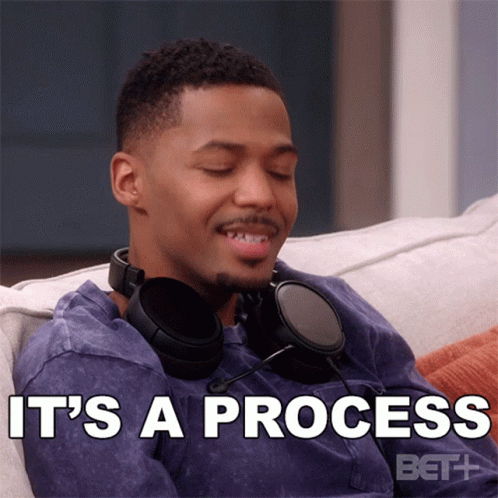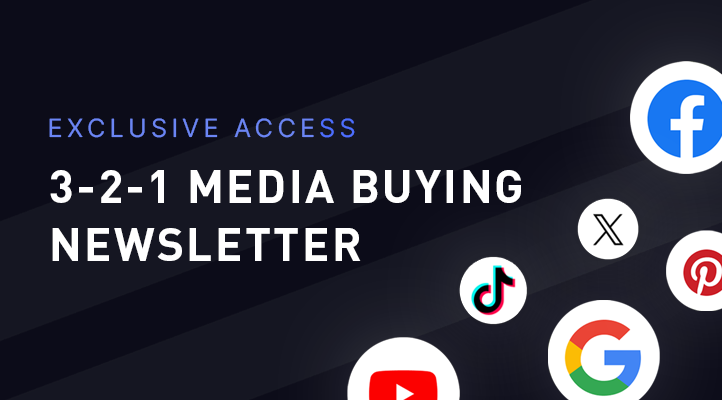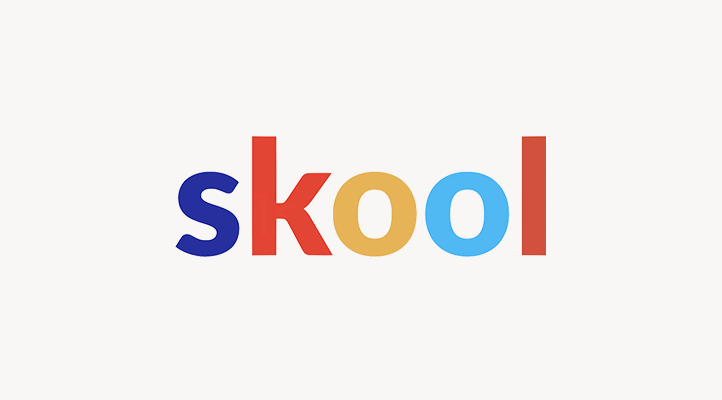A media buyer is responsible for purchasing and strategically placing advertisements to reach the target audience effectively. This role involves negotiating ad space, monitoring campaign performance, and ensuring that ads resonate with the intended demographic. In this article, we’ll explore the core responsibilities, required skills, and how to become a successful media buyer.
Key Takeaways
- A media buyer’s primary role involves strategically placing ads to maximize reach and conversions, requiring strong negotiation and relationship-building skills.
- Embarking on a media buying career typically begins with a degree in marketing, advertising, or communications, supplemented by internships, certifications, and hands-on experience in the field.
- Key strategies for effective media buying include leveraging data and analytics, building strong relationships with media partners, and continuously optimizing campaigns to ensure success.
Understanding the Role of a Media Buyer
Imagine being the mastermind behind where and when an advertisement appears to captivate the right audience at the perfect moment. That is the essence of what a media buyer does. As the linchpin of the advertising process, a media buyer ensures ads are not just seen but are placed strategically to resonate with the intended demographic. Negotiation is the name of the game, where forging the best value for ad space and time purchased is a delicate dance of communication and strategy. It’s not just about spending less; it’s about spending smart to maximize reach and conversions.

And let’s not forget the power of relationships—connecting with media channels, understanding their audience, and tailoring campaigns to fit like a glove is what turns a good media buyer into a great one.
Key Responsibilities
In the job of a media buyer, each day is a new puzzle to solve. The responsibilities include:
- Identifying specific target audiences and crafting tailored media campaigns
- Comparing and haggling over rates to secure the most impactful ad space and airtime
- Monitoring ROI and adjusting schedules on the fly to ensure successful campaigns
These tasks are critical to the success of media buying.
Required Skills
The job of a media buyer requires a blend of skills, including:
- Strong communication for clear content delivery
- Negotiation skills to turn the tide of any deal
- Critical thinking and analytical prowess to assess a campaign’s pulse.
Moreover, organizational skills and meticulous attention to detail are the compasses guiding the media buyer through the stormy seas of multiple tasks and tight deadlines.
Path to Becoming a Media Buyer
Embarking on a career as a media buyer means:
- diving headfirst into the depths of advertising and media strategies
- having your finger on the pulse of media trends
- understanding the ebbs and flows of audience behaviors
- understanding advertising metrics like the back of your hand.
Let’s chart the course for those looking to navigate these waters, from the educational undertow to the experiential currents that shape a savvy media buyer.

Educational Background
The journey often begins with a bachelor’s degree in marketing, advertising, or communications, laying the foundational stones for a career in media buying. Courses in media planning and statistics are the buoys in the ocean of media buying, guiding you through the vastness of this field. And while not a requirement, an advanced degree like a master’s in marketing can be the wind in your sails, giving you a competitive edge in the job market.
Gaining Experience
Dipping your toes into the real-world waters of media buying often means starting with internships or entry-level positions at advertising agencies, where you can learn to swim against the current. These positions are the stepping stones, the first currents that propel you forward in your media buying journey. And while certifications are not explicitly mentioned, they are the life vests that can keep you afloat and enhance your marketability in the industry.
Certifications and Training
In the sea of job candidates, certifications from recognized advertising bodies or online courses focusing on digital media buying and media strategy can be your beacon, enhancing employability and signaling your expertise to the industries awaiting your skills.
The Media Buying Process
Navigating the process of media buying involves eleven steps:
- Planning and research
- Negotiating for ad space
- Launching campaigns
- Monitoring campaigns
- Analyzing data
- Optimizing campaigns
- Managing budgets
- Evaluating performance
- Making adjustments
- Reporting results
- Making strategic decisions
Each step is a critical example of a juncture in the quest to ensure the message not only reaches its destination but also makes a lasting impact, much like organizing a well-structured file, where things happen as planned.

The journey concludes with the all-important Insertion Order (IO), the official seal on your media buying voyage.
Planning and Research
Charting the course begins with knowing the waters, and that means in-depth planning and research. A media buyer must be a cartographer, mapping out the target audience’s profile using advanced tools and techniques for precise targeting and segmentation. Understanding the media landscape is crucial for steering the campaign towards success, with each decision informed by a compass of data and strategic insights.
Working with a set budget and clear objectives is your anchor, keeping the campaign grounded and on course.
Negotiating Ad Space
Securing the best port for your ad is where skillful negotiation comes into play. Every media buyer must navigate the market, armed with a clear vision of their ad space needs within the constraints of their budget. It’s a marketplace where the price of entry is as important as the strategic berth you secure for your campaign.
Launching and Monitoring Campaigns
Once the coordinates are set, the media buy adventure truly begins with the launch of the campaign, ensuring all systems are go with the right software and metrics in place to track a sea of results. The real-time monitoring phase is where a media buyer’s vigilance is paramount, with the campaign’s performance scrutinized through a spyglass of KPIs, from reach and impressions to the treasure of conversions.
Post-campaign analysis is the map that reveals the voyage’s success, helping navigate future campaigns with greater precision and insight.
Best Practices for Effective Media Buying
As a media buyer, one must always be on the lookout for the lighthouses of best practices that can illuminate the path to campaign success.

These practices encompass:
- The strategic harnessing of data and analytics
- The cultivation of strong relationships with media partners
- The continual optimization of campaigns to ensure they stay on a successful trajectory.
Leveraging Data and Analytics
The compass guiding any successful media buy is data and analytics. In the vast sea of advertising, it’s the data that helps chart a course based on the stars of actual performance rather than the winds of assumption.
Advanced AI serves as the navigator, offering predictive analytics that can forecast the potential success of an ad campaign. With tools like Facebook’s algorithm, media buyers can count on the technology to optimize ad spend for the best results.
Building Strong Relationships
In the world of media buying, the people you know can be as critical as the money you invest. Trust is the currency that forges lasting partnerships and opens the doors to more favorable negotiation outcomes, making honest connections essential to not lose sight of your goals when making a purchase. Recognizing the right sign in these relationships can make all the difference, like finding the perfect ticket to success.

Establishing a rapport with media partners is like having a trusted crew; together, you can navigate the most challenging seas and secure the most coveted treasures.
Continuous Optimization
Remaining vigilant and ready to adjust one’s sails is the key to staying on course. The media buying journey requires continuous optimization, from reallocating budgets to tweaking creative elements and refining targeting strategies. A/B testing serves as a lookout, helping to spot which version of an ad will catch the wind.
Utilizing creative management platforms and securing value-added opportunities ensures that the campaign not only maintains its course but also reaches its destination with flying colors.
Challenges in Media Buying
Every voyage encounters its share of storms, and in media buying, these can come in the form of ad fraud, tight budgets, and murky contracts. Ad fraud is a siren call leading unwary buyers to treacherous waters, where bots and click farms can sink a campaign’s budget. With digital media space becoming as contested as the high seas, especially during election years, media buyers must have a keen eye for value and a strong grasp of analytical capabilities to navigate these challenges.
Ad Fraud Prevention
To combat the kraken of ad fraud, media buyers must employ sophisticated detection algorithms and maintain constant vigilance. Machine learning and pattern recognition are the sonar technologies that detect fraudulent ad impressions in the deep waters of digital advertising.
Partnering with ad verification companies can be like having a seasoned navigator on board, bringing expertise and advanced tools to help chart a safe course.
Budget Management
In the quest for successful media buying, managing your treasure chest wisely is imperative. Setting a realistic budget and considering all the filters for leads before diving into negotiations can save you from the peril of overspending. Building contingency plans is like having a lifeboat, ensuring you don’t go overboard when the waters get rough.
Clear Contracts
Drafting clear contracts is like drawing a detailed map; it ensures everyone knows the route and the destination. Clear terms and conditions are the landmarks that prevent misunderstandings and ensure that all parties are sailing in the same direction.
Emerging Trends in Media Buying
The horizon of media buying is always changing, with new trends emerging like distant lands waiting to be discovered. Some of the current trends in media buying include:
- The introduction of AI into programmatic advertising, which has charted new courses for ad placement optimization
- The surge in mobile advertising, which presents new oceans to explore
- The rise of video advertising, which offers new opportunities for engaging audiences
These trends are shaping the future of media buying and are important for advertisers to keep up with in order to stay competitive.
Unified measurement solutions are the new compasses that guide us through the challenges of data privacy and accurate attribution.
Programmatic Advertising
The winds of change in media buying are blowing towards programmatic advertising, where the precision and efficiency of AI-driven strategies are transforming the way ad space is bought and sold in real-time. The technology not only automates the buying process but brings a level of targeting precision that was once the realm of fantasy, allowing media buyers to navigate through the vast array of data and make informed bidding decisions on the fly.
Mobile and Video Advertising
The swell of mobile and video advertising is riding high on the tide of consumer behaviors, with mobile apps offering a treasure trove of engaged audiences and innovative ad formats. As traditional TV viewers set sail for the digital world, media buyers must adjust their compasses to reach the 72.2 million cord-cutters expected by 2025.

Unified Measurement Solutions
In the quest for precise navigation, unified measurement solutions stand as the sextant for media buyers, aggregating data from multiple channels into a single, reliable metric of performance. This approach addresses the murky waters of privacy challenges and allows for accurate attribution, ultimately ensuring that each media buy is charted with the utmost precision.
Tips for Negotiating Media Buys
The art of negotiation is a critical skill for any media buyer looking to secure the most valuable treasure: favorable ad placements at the best possible price. To navigate these negotiations successfully, one must be well-prepared with research, understand the limits of their budget, and ensure that all agreements are firmly documented.
Do Your Research
Before setting sail on negotiations, arm yourself with a treasure map of comprehensive market data and a keen understanding of the media landscape. The leverage you hold in negotiations is often anchored in your spending power and the relationships you’ve built with media outlets, providing you with the upper hand in securing the best possible deal.
Understand Your Budget
Knowing the depth of your coffers is crucial. Setting out with a budget plan ensures that you do not find yourself adrift, having spent beyond your means during the heat of negotiations. Understanding your financial boundaries is like knowing the limits of your ship; it determines how far you can afford to go without risking a shipwreck.
Get It in Writing
Like the captain’s log, every detail of the negotiation should be recorded. Documenting terms clearly is the lighthouse guiding both parties safely through the campaign, ensuring that the agreed-upon conditions are met without misinterpretation. Think of it as your insurance policy against the unpredictable tides of memory and verbal agreements.
Factors to Consider When Choosing Ad Placements
Selecting the right ad placements is like choosing the right ports to dock your ship. It requires a deep understanding of the location where your audience is most likely to be engaged and a thorough evaluation of the costs and benefits associated with each placement option. With fewer options, it becomes crucial to decide effectively.
Compatibility with ad formats is the final piece of the puzzle, ensuring that your message is not only delivered but also resonates with the audience.
Target Audience Alignment
The compass point for any ad placement decision should always be how well it aligns with the target audience. Whether navigating the decision between Out of Home (OOH) and Digital Out of Home (DOOH) or selecting diverse ad placements to reinforce brand presence, the key is ensuring that your message reaches the right audience effectively.
Cost vs. Benefit Analysis
Weighing the cost against the potential benefits of each ad placement is like evaluating the potential bounty of a treasure hunt. It’s essential to anchor your decisions in a cost vs. benefit analysis to ensure the return on investment makes the voyage worthwhile.

Regular evaluation of ad placements and adjusting strategies based on performance metrics help optimize campaigns for the best return on investment.
Ad Format Compatibility
Ensuring that your chosen ad format is compatible with the selected platforms is akin to selecting the right sails for your ship. From Mobile News Feeds optimized for on-the-go engagement to Instant Articles designed for immersive reading experiences, each ad format must be chosen with care to maximize performance and viewer engagement.
Summary
Navigating the ever-changing seas of media buying in 2024 requires a blend of art and science, intuition and data, courage and caution. As we’ve charted the course through the role of a media buyer, the steps to entering the field, the intricacies of the process, and the emerging trends shaping the industry, it’s clear that success lies in staying vigilant, being informed, and continually adapting. May this guide serve as your compass, helping you set sail towards a successful career in media buying, where the horizon of opportunity is as vast as the ocean itself.

Frequently Asked Questions
What is the most critical skill for a media buyer to possess?
The most critical skill for a media buyer to possess is strong communication and negotiation abilities, critical thinking, and organizational skills, which are essential for effective collaboration, securing favorable deals, and managing multiple tasks.
How has AI impacted media buying?
AI has revolutionized media buying by enabling predictive analytics, dynamic targeting, testing automation, and smarter bidding decisions, ultimately enhancing the effectiveness of programmatic advertising.
What are the emerging trends in media buying for 2024?
The emerging trends in media buying for 2024 include the integration of AI in programmatic advertising, the rise of mobile and video advertising, and the adoption of unified measurement solutions that aggregate data from multiple channels into a single metric for performance. These trends are shaping the future of media buying.
What are the challenges faced in media buying today?
The challenges in media buying today include combating ad fraud, effectively managing budgets, and drafting clear contracts to ensure smooth campaign execution. These factors require careful consideration and proactive solutions to successfully navigate the media buying landscape.
How can media buyers prevent overspending during negotiations?
To prevent overspending during negotiations, media buyers should start with a detailed budgeting plan, set realistic expectations for media spend, and consider all potential cost implications before finalizing deals. This helps in maintaining financial control and getting the best value for the budget.
Click HERE to apply to join Mediabuyer.com today to browse our marketplace and discover the perfect media buyer for your business.








